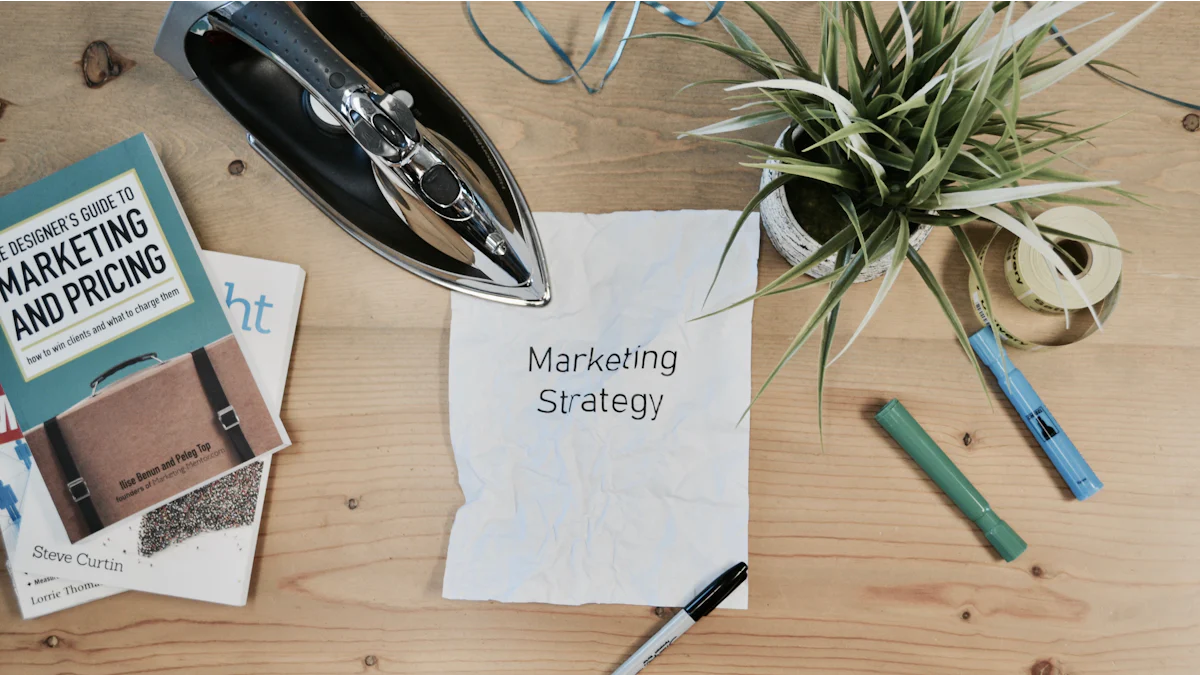How to Boost Your MQL to SQL Conversion Rate in 2025

Converting marketing qualified leads (MQL) into sales qualified leads (SQL) is a critical step in your sales funnel. It’s not just about numbers—it’s about ensuring your efforts translate into real business opportunities. In 2025, industries are seeing varied conversion rates, with sectors like transportation and logistics achieving 19%, while addiction treatment lags at 14%.
Why does this matter? Improving your MQL to SQL conversion rate can transform your business. Here’s how:
You’ll boost sales efficiency by focusing on leads that are ready to convert.
You’ll improve lead quality, making the sales process smoother.
You’ll drive higher revenue by turning more leads into paying customers.
In today’s competitive landscape, refining this process isn’t optional—it’s essential.
Key Takeaways
Turning MQLs into SQLs faster can help grow your sales and income.
Get marketing and sales teams to work together by setting clear rules for leads and talking often.
Pay attention to good leads by using data to score them and grouping them by actions.
Use CRM tools to make sure marketing and sales share leads smoothly, so no leads are missed.
Check and improve your plans often to keep up with market changes and do better overall.
Understanding MQLs and SQLs

What is an MQL?
A marketing qualified lead (MQL) is someone who has shown interest in your business but isn’t quite ready to make a purchase. Think of them as being in the early stages of their journey. They might have downloaded an eBook, signed up for a webinar, or browsed your website multiple times. These actions show they’re curious, but they still need nurturing before they’re ready to talk to sales.
MQLs are identified based on specific criteria like demographics, engagement levels, or how well they match your ideal customer profile. They’re valuable because they represent potential customers who could convert into paying clients with the right guidance.
What is an SQL?
A sales qualified lead (SQL) is a step closer to becoming a customer. These leads have moved beyond just exploring—they’re actively considering a purchase. They’ve shown strong intent, like requesting a demo, filling out a pricing form, or engaging with content designed for decision-making.
SQLs meet additional qualification criteria, such as having the budget, authority, need, and timeline (BANT) to make a buying decision. At this stage, your sales team steps in to close the deal.
Here’s a quick comparison to help you understand the differences:
Aspect | Marketing Qualified Lead (MQL) | Sales Qualified Lead (SQL) |
|---|---|---|
Readiness for Sales | Not yet ready for direct sales engagement; in the early stages of research and evaluation. | Ready for direct sales engagement; actively considering a purchase decision. |
Level of Engagement | Moderate to high interest in the company's offerings, but not yet ready to buy. | High interest and intent to purchase. Demonstrated by active engagement with bottom-of-funnel content. |
Qualification Criteria | Initial criteria focus on lead fit and interest level, such as demographic data and engagement metrics. | Additional criteria include budget, authority, need, and timeline (BANT) to assess readiness for sales engagement. |
Why the MQL to SQL Process is Crucial
The transition from MQL to SQL is where the magic happens. It’s the bridge between marketing and sales, and getting it right can make or break your conversion rate. When this process works smoothly, your sales team spends less time chasing unqualified leads and more time closing deals.
But here’s the catch—many businesses struggle with this handoff. Did you know that 84% of business leaders say the marketing-to-sales handoff is a major challenge? That’s a big deal. Without a clear process, you risk losing valuable leads.
Another common hurdle is lead qualification. While 66% of leaders believe that having a solid lead-scoring method helps align marketing and sales, many still lack one. By addressing these challenges, you can improve collaboration, boost efficiency, and ultimately drive more revenue.
Why MQL to SQL Conversion Rate Matters
Impact on Revenue and Sales Efficiency
Your MQL to SQL conversion rate directly affects your revenue. When more marketing qualified leads turn into sales qualified leads, your marketing efforts translate into real sales opportunities. This means more customers and, ultimately, more revenue for your business.
A higher conversion rate also makes your sales process more efficient. By focusing on qualified leads, your sales team spends less time chasing dead ends and more time closing deals. This alignment between marketing and sales ensures that your team targets the right audience with the right message. It’s a win-win—better results with less wasted effort.
Plus, high-quality leads often lead to larger deals. These customers are more likely to stick around, driving long-term revenue growth. So, improving this conversion rate isn’t just about short-term wins. It’s about building a sustainable, profitable future for your business.
Enhancing Marketing and Sales Collaboration
When marketing and sales teams work together, magic happens. A strong MQL to SQL process fosters collaboration between these two critical departments. Marketing identifies and nurtures the right leads, while sales takes over when those leads are ready to buy.
This collaboration ensures that everyone is on the same page. Marketing knows what kind of leads sales needs, and sales trusts that the leads they receive are worth pursuing. Regular communication and shared goals make this handoff seamless.
When both teams align, your business benefits. You’ll see better messaging, more targeted campaigns, and a smoother customer journey. This partnership not only boosts your conversion rate but also creates a more cohesive and efficient workflow.
Improving Lead Quality and ROI
Not all leads are created equal. By improving your MQL to SQL process, you can focus on high-quality leads that are more likely to convert. This means your sales team spends their time on prospects who are genuinely interested in your product or service.
Better lead quality also improves your return on investment (ROI). Every dollar you spend on marketing goes further when it generates leads that actually convert. Plus, high-quality leads often become loyal customers, providing long-term value to your business.
In short, refining this process helps you get the most out of your marketing and sales efforts. You’ll see higher ROI, better results, and a stronger bottom line.
How to Calculate MQL to SQL Conversion Rate
The Formula for MQL to SQL Conversion
Calculating your MQL to SQL conversion rate is simpler than you might think. It’s all about understanding how many marketing qualified leads successfully transition into sales qualified leads. Here’s the formula most experts recommend:
Source | Formula |
|---|---|
Alore | MQL to SQL Conversion Rate = (Number of SQLs / Number of MQLs) x 100 |
Agency Analytics | MQL to SQL Conversion Rate = # of SQLs / # of MQLs x 100 |
Klipfolio | MQL to SQL Conversion Rate = (Number of SQLs / Number of MQLs) x 100 |
MetricHQ | MQL to SQL Conversion Rate = (SQLs / MQLs) x 100 |
For example, if you had 500 MQLs last month and 100 of them became SQLs, your conversion rate would be:
(100 / 500) x 100 = 20%
This percentage gives you a clear picture of how well your leads are progressing through the funnel.
Tools to Track and Measure
Tracking your conversion rate requires the right tools. Here are some of the most reliable options:
Tool Type | Description |
|---|---|
Customer Relationship Management | Essential for tracking customer interactions and analyzing conversion rates at each sales funnel stage. |
Marketing Automation Tools | Automates marketing tasks to nurture leads and ensure timely engagement. |
Analytics and Data Visualization | Provides analysis and visualization of data to identify trends and measure campaign impacts. |
Using these tools, you can monitor how your MQLs move through the pipeline and identify areas for improvement. A CRM, for instance, helps you track individual leads, while marketing automation tools ensure timely follow-ups.
Avoiding Common Calculation Errors
Even with the right formula and tools, mistakes can happen. Here are some common pitfalls to watch out for:
Failing to accurately define MQL and SQL criteria
Lack of personalized communication in nurturing campaigns
Inadequate follow-up timing
Over-reliance on generic marketing tactics
To avoid these errors, make sure your teams agree on what qualifies as an MQL or SQL. Personalize your approach to leads and follow up promptly. Finally, ditch one-size-fits-all strategies in favor of tailored campaigns.
By calculating your conversion rate correctly and avoiding these mistakes, you’ll gain valuable insights into your sales funnel and improve your overall performance.
Benchmarks for MQL to SQL Conversion Rates in 2025
Industry Averages and Trends
Understanding industry benchmarks helps you gauge how your business stacks up. In 2025, the average MQL to SQL conversion rate across industries is 13%. However, this number varies depending on the sector and lead acquisition channels. For instance, leads from email campaigns or customer referrals tend to convert better than those from webinars or events.
Here’s a snapshot of conversion rates by industry:
Industry | MQL to SQL Conversion Rate | Notes |
|---|---|---|
Addiction Treatment | 14% | Lower rates due to social stigma and complex qualification processes. |
Aerospace & Aviation | 17% | Specialized knowledge and decision-making slow down conversions. |
Transportation & Logistics | 19% | High costs make buyers cautious without assurance of product fit. |
These trends highlight the importance of tailoring your approach based on your industry’s unique challenges.
Factors Influencing Conversion Rates
Several factors can impact how well your marketing qualified leads transition into sales qualified leads:
Lead Quality: High-quality leads are more likely to convert. Targeted marketing campaigns play a big role here.
Sales and Marketing Alignment: When these teams work together, you avoid misunderstandings about lead quality.
Clear Definitions of MQL and SQL: Specific criteria for both ensure smoother transitions.
Training and Resources: Ongoing training for your sales team improves their ability to engage leads effectively.
By focusing on these areas, you can boost your conversion rate and make the most of your efforts.
Comparing Your Metrics to Benchmarks
How do you know if your conversion rate is on track? Start by comparing your numbers to industry averages. If your rate is below 35%, it’s time to reevaluate your sales pipeline. Businesses with rates above 45% might shift their focus to optimizing other stages of the funnel.
Here’s a simple way to assess your performance:
Research industry benchmarks to understand what’s typical for your sector.
Analyze your historical data to spot trends and set a baseline.
Align your goals with realistic expectations based on your growth strategy.
Remember, this isn’t about hitting a static target. Focus on continuous improvement. Strong communication between your sales and marketing teams will help you refine your process and improve lead quality over time.
Actionable Strategies to Improve MQL to SQL Conversion Rate

Aligning Marketing and Sales Teams
Defining Clear Lead Qualification Standards
You can’t improve your MQL to SQL process without clear definitions. Both teams need to agree on what makes a lead marketing-qualified and when it’s ready for sales. Use criteria like engagement levels, demographics, and intent to create a shared understanding. This alignment ensures marketing targets the right leads and sales receives prospects ready to convert.
Tip: Create a service level agreement (SLA) between teams. It outlines responsibilities and sets performance metrics for both sides.
Encouraging Regular Inter-Team Communication
When marketing and sales communicate regularly, your conversion rate improves. Schedule weekly or bi-weekly meetings to share updates, insights, and feedback. Use shared platforms to track lead progress and ensure transparency.
Here’s a quick look at best practices for fostering collaboration:
Best Practice | Description |
|---|---|
Collaboration | |
Regular Meetings | Share data and insights to keep everyone aligned. |
Feedback Loop | Sales feedback helps marketing refine lead generation strategies. |
Enhancing Lead Scoring and Segmentation
Implementing Data-Driven Scoring Models
Lead scoring helps you prioritize leads based on their likelihood to convert. Assign numerical values to leads using criteria like engagement, demographics, and behavior. For example, a lead who downloads a whitepaper might score higher than one who just visits your homepage.
Businesses using intelligence-driven lead scoring see 75% higher conversion rates and a 30% reduction in sales cycles.
Segmenting Leads by Behavior and Demographics
Not all leads are the same. Segment them based on shared characteristics like job title, industry, or behavior. This allows you to tailor your marketing efforts and deliver more relevant messages.
Here’s a simple process to enhance segmentation:
Define criteria like demographics and behavior.
Assign scores to leads based on these factors.
Regularly review and adjust your segmentation strategy.
Personalizing Lead Nurturing Campaigns
Using Email Automation Effectively
Email automation is your secret weapon for nurturing leads. Use tools like HubSpot or LeadSquared to send timely, personalized emails. For instance, if a lead downloads a case study, follow up with an email offering a demo.
Companies that nurture leads generate 50% more sales at 33% lower costs.
Creating Tailored Content for Leads
Generic messages don’t cut it anymore. Create content that speaks directly to your leads’ needs and pain points. Personalized content has a 10% higher conversion rate than generic alternatives. Use blogs, videos, or eBooks to engage your audience at every stage of their journey.
Pro Tip: Tools like Ortto and Sender can help you map customer journeys and deliver personalized experiences.
Optimizing the Lead Handoff Process
Leveraging CRM Tools for Seamless Transitions
A smooth handoff between marketing and sales can make all the difference in converting leads. This is where CRM tools come in handy. They act as a central hub for all your lead data, ensuring nothing gets lost in translation. With a CRM, you can track every interaction, from the moment a lead becomes an mql to when they’re ready to be sales qualified leads.
CRMs like Salesforce or HubSpot allow you to assign tasks, set reminders, and even automate notifications. For example, when a lead reaches a certain score, the system can alert your sales team instantly. This ensures no time is wasted, and your team can act while the lead is still warm.
Pro Tip: Use CRM analytics to identify bottlenecks in your handoff process. This helps you refine your strategy and improve efficiency.
Establishing Clear Handoff Protocols
Without clear protocols, leads can fall through the cracks. To avoid this, create a step-by-step process for handing off leads from marketing to sales. Define when a lead is ready to transition and what information needs to be shared.
Here’s a simple checklist to guide your handoff:
Confirm the lead meets sql criteria (e.g., budget, authority, need, timeline).
Share detailed notes on the lead’s journey so far.
Schedule a follow-up within 24 hours of the handoff.
When everyone knows their role, the process becomes seamless. This clarity not only boosts conversion rates but also strengthens trust between teams.
Continuously Monitoring and Refining Processes
Tracking Conversion Metrics Regularly
You can’t improve what you don’t measure. Regularly tracking your mql to sql conversion rate helps you spot trends and identify areas for improvement. Use dashboards in your CRM or analytics tools to monitor key metrics.
Focus on data like the number of leads transitioning to sales qualified leads and the time it takes for them to move through the funnel. These insights help you understand what’s working and what needs adjustment.
Tip: Set monthly or quarterly goals for your conversion rate. This keeps your team focused and motivated.
Testing and Iterating on Strategies
No strategy is perfect from the start. That’s why testing and iterating are crucial. Experiment with different lead nurturing tactics, scoring models, or handoff protocols. For example, you might test whether personalized emails lead to faster conversions compared to generic ones.
Once you gather data, analyze the results and tweak your approach. Continuous improvement ensures your process stays effective, even as market conditions change.
Remember, small changes can lead to big results. Keep testing, learning, and adapting to stay ahead.
Improving your mql to sql conversion rate is more than just a numbers game—it’s about creating a seamless journey for your leads. By understanding the transition from mql to sql, you can align your teams, enhance lead quality, and drive better results.
To get started, focus on these key strategies:
Refine your lead scoring system to ensure clear criteria for both mql and sql.
Strengthen your lead nurturing programs with targeted content and timely automation.
Align marketing and sales through regular meetings and shared goals.
Use advanced analytics to track progress and predict lead behavior.
Optimize the handoff process with clear communication and feedback loops.
Take a moment to evaluate your current processes. Small changes today can lead to big improvements tomorrow. Start refining your approach and watch your conversion rates soar!
FAQ
What is a good MQL to SQL conversion rate in 2025?
A good conversion rate depends on your industry. On average, 13% is typical, but high-performing businesses aim for 20% or more. Compare your rate to industry benchmarks to set realistic goals.
Tip: Focus on improving lead quality and team alignment to exceed the average! 🚀
How often should I review my MQL to SQL process?
You should review it monthly or quarterly. Regular reviews help you spot trends, fix bottlenecks, and refine strategies.
Pro Tip: Use CRM dashboards to track metrics and make data-driven decisions.
What tools can help improve my conversion rate?
CRM platforms like HubSpot or Salesforce are essential. Pair them with marketing automation tools (e.g., Marketo) and analytics software (e.g., Google Analytics) for better tracking and nurturing.
Note: The right tools save time and improve accuracy.
How do I align my marketing and sales teams?
Start with clear lead qualification standards. Schedule regular meetings to share updates and feedback. Use shared tools to track progress and ensure transparency.
Reminder: Collaboration is key. Teams that work together convert more leads! 🤝
Can small businesses improve their MQL to SQL rate?
Absolutely! Focus on personalized lead nurturing, clear handoff protocols, and regular process reviews. Even small changes can lead to big improvements.
Encouragement: Start small, stay consistent, and watch your numbers grow! 🌟
See Also
5 Effective Strategies to Enhance Healthcare Content Marketing
Achieving SEO Excellence Using Perplexity AI: An In-Depth Manual
Which SEO Trends and Predictions Are You Monitoring for 2024?
Boosting Email Engagement: Effective Tactics to Increase Blog Traffic

